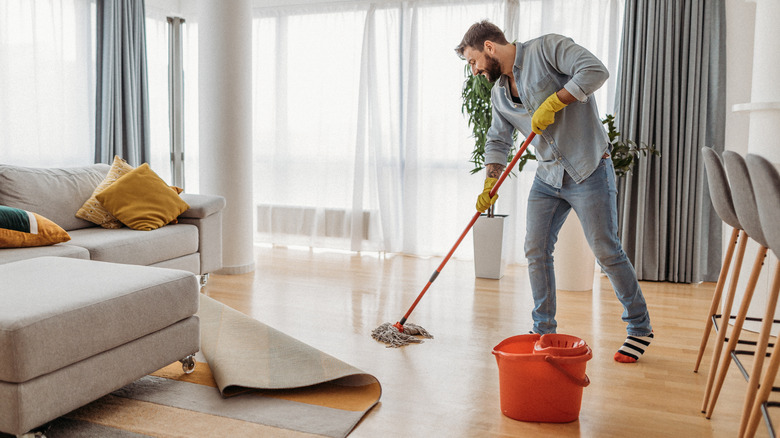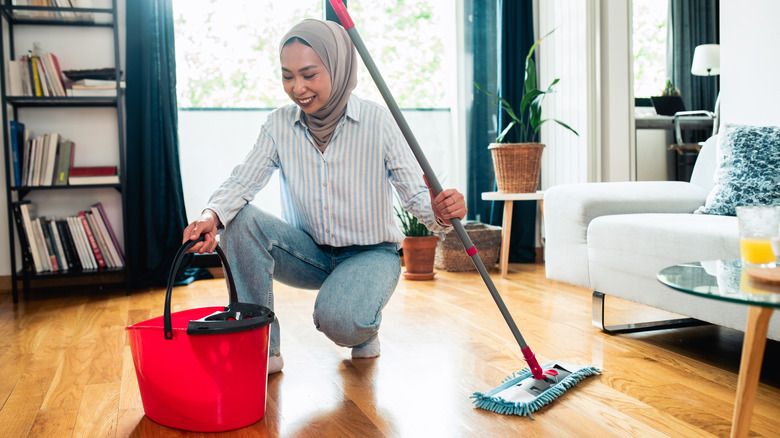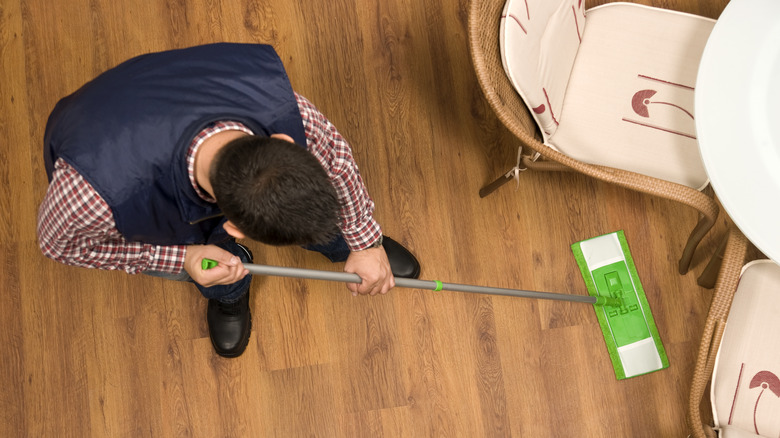The Floors That You Cannot Clean With Dish Soap And Why
Dish soap doesn't only have to be used on dishes. It can also be used around the house in a number of innovative ways, as it can clean items like jewelry, upholstery, carpet stains, and countertops. It can even help eliminate fruit flies. A bucket of soapy water is undeniably a handy thing to have around when cleaning is on the agenda. However, at the same time, there are plenty of common items that shouldn't be cleaned with dish soap, including certain types of floors.
Older generations used to take a bucket of sudsy water and a mop or a scrub brush and scour their floors clean, and this is still a workable solution today. If you have ceramic tile floors, linoleum, or any kind of vinyl flooring, as little as 1 to 2 tablespoons of dish soap mixed into a bucket of water will clean those areas quickly and effectively. However, for hardwood floors or even the click-lock laminate types, soap and water could be disastrous.
Don't mop wood floors with soap and water
Classic hardwood floors are a gorgeous addition to any home, so the last thing you want to do is clean them with dish soap. If you did this, the soap and water could absorb into the wood and ultimately warp the planks of your flooring. When moisture gets into your wood floors, it doesn't all dry at the same time, which can create an uneven bend or twist — also known as a warp — in the wood.
Warped wood is catastrophic for floors, and in most cases part or all of the floor will have to be replaced, which is an expensive and time-consuming undertaking. Instead of soap and water, use a floor cleaner specifically designed for wood and follow all the manufacturer's recommendations for care, cleaning, and maintenance. This will ensure that your wood floors stay sturdy and look great for years to come. Indeed, properly maintained wood floors can last for decades.
Laminate floors require special care
When click-lock laminate floors come into contact with soap and water, they can be completely ruined. Naturally, a standard spill won't cause that much trouble, as the top layer is intended to withstand moisture. However, if water seeps between and underneath the planks, it can cause a lot of problems. First, the flooring could delaminate, separating the layers. Then, once water gets into the fiberboard layer, which is below the topmost appearance and protective layers, it can take weeks to dry because of the fiberboard's high density and the tight seams of the installed boards. Even when it does finally dry out completely, the damage is already done and the laminated slats will never revert to their original condition.
However, while mopping with dish soap and water is a no-no, mopping with a microfiber mop, a Swiffer, a dry mop, and/or a laminate-specific cleanser is required at least once every couple of months. As always, for complete care and cleaning instructions, always refer to the manufacturer's recommendations.


